Running a dog daycare or kennel involves much more than providing dogs food, shelter, and exercise. A crucial aspect of ensuring the well-being and safety of these furry guests is understanding canine communication. Dogs, like humans, have their own language, and for those caring for them, being fluent in this language is vital. Here are some valuable tips for daycare and kennel staff to enhance their understanding of canine communication.
1. Recognizing Body Language

Dogs communicate primarily through body language. Observing a dog’s posture, facial expressions, and tail movements can provide insights into their feelings and intentions. For example, a relaxed body, a wagging tail, and a playful stance usually signify a happy and comfortable dog, while a tucked tail, pinned-back ears, and a lowered body might indicate fear or anxiety.
2. Understanding Vocalizations
Dogs use a variety of sounds to communicate, including barks, whines, growls, and howls. Each of these vocalizations can have different meanings depending on the context. For instance, a dog may bark out of excitement, to alert, or even out of boredom. Differentiating these sounds can help staff respond appropriately to a dog’s needs.
3. Interpreting Eye Contact
A dog's eyes can be very expressive. Direct, prolonged eye contact can be perceived as a challenge or threat in the canine world, whereas avoiding eye contact often signifies submission or discomfort. Learning to interpret these subtle cues can help understand a dog’s emotional state.
4. Sensing the Energy
Dogs are highly sensitive to the energy and emotions of those around them. Staff members should be calm, confident, and assertive in their interactions. Dogs are more likely to respond positively to someone who exudes calm and assertive energy.
5. Recognizing Play vs. Aggression
It's important to distinguish between playfulness and aggression. Playful behavior often includes a “play bow,” bouncy movements, and a relaxed facial expression. Aggressive behavior, on the other hand, may involve stiff body movements, bared teeth, and deep growls. Misinterpreting these behaviors can lead to dangerous situations.
6. Understanding Breed-Specific Communication

Different breeds may have unique ways of communicating. For instance, some breeds are more vocal, while others may rely more on body language. Staff should be aware of these breed-specific traits to understand better and cater to the individual needs of each dog.
7. Creating a Safe and Communicative Environment
The environment plays a significant role in how dogs communicate. Overcrowded or high-stress environments can lead to miscommunication and conflict among dogs. Ensure that the daycare or kennel space is conducive to positive interactions, with plenty of space for dogs to play and retreat.
8. Continuous Learning and Observation
Understanding canine communication is an ongoing process. Encourage staff to continuously observe and learn from the dogs they interact with. Attending workshops, seminars, or even online courses on animal behavior can further enhance their understanding.
9. Building Trust and Relationships
Building a trusting relationship with each dog will greatly aid in understanding their communication. Spend time with each dog individually to learn their personality and unique communication style.
10. Working with Behaviorists
Don’t hesitate to consult with professional dog behaviorists for complex cases or dogs with behavioral issues. Their expertise can provide valuable insights and strategies for effective communication and handling.
Understanding canine communication is essential for providing the best care and maintaining a safe environment in dog daycares and kennels. By becoming adept at interpreting the subtle nuances of dog body language, vocalizations, and behavior, staff can ensure a happier, healthier, and more harmonious atmosphere for their canine charges. Remember, good communication is the key to a successful dog care facility! 🐕🐾
Start a free trial with Revelation Pets to see how much easier managing your pet-care business can be.






